Dive into the vibrant culinary culture of Bulgaria with tarator (tаратор) – a chilled cucumber soup that’s more than just a refreshing dish. You’re one step away from discovering a nutritious summer escape your palate will thank you for.
Its simplicity, combined with its delightful flavors, makes it a delightful addition to any menu. Here is an easy-to-follow guide for homemaking of this delicious tarator recipe.
Tarator: Bulgaria’s Signature Summer Soup
Tarator is a traditional Bulgarian soup perfect for hot summer days. Its creation is an act of simplicity – cucumbers finely sliced, stirred into a cooling concoction of yogurt, with water added to reach the perfect consistency.
A burst of flavor is introduced with the addition of crushed garlic, walnuts, a pinch of salt, a drizzle of oil, and a dash of dill.
Best savored chilled, this refreshing soup can play the role of an appetizer or take center stage as a main dish. Its unique flavor profile artfully balances the sweet crunch of cucumber with tangy yogurt and aromatic herbs.
In Bulgaria, tarator is more than just a dish; it’s a summer tradition, often enjoyed alongside other local delicacies. Its popularity resonates with the season’s desire for something light, refreshing, and absolutely delectable.
Prepare The Necessary Tools to Make Tarator
Ingredients of Authentic Tarator
Step-by-Step Guide to Make Tarator
Step 1: Prepare The Cucumber
Start by cutting the cucumber into very small pieces, as shown in the images. You can peel the cucumber beforehand if you prefer. After slicing, transfer the cucumber pieces into a bowl.
Step 2: Add Fresh Dill
Next, finely chop fresh dill and add it to the bowl with the cucumber.
Step 3: Incorporate Garlic And Walnuts
Crush the garlic and walnuts, then add them to the cucumber and dill. Use a fork to mix the ingredients well.
Step 4: Stir In The Yogurt
Pour the yogurt into the bowl, over the mixture. Add water as desired, then stir again to combine everything.
Step 5: Season Your Tarator
Now it’s time to season the mixture. Add salt to taste, then drizzle olive oil over the mixture. Mix everything well one last time.
Step 6: Chill And Serve
Place your tarator in the refrigerator for at least 30 minutes to chill before serving. When ready, portion out the chilled tarator into bowls or soup plates for serving.
Tips And Tricks Of Cooking Tarator
If unavailable, Greek yogurt is the closest substitute. However, considering Bulgarian yogurt’s sourness, adding vinegar to other yogurts helps replicate that tanginess.
Enchanting Ways To Serve Your Tarator
Storage Tips
Tarator can stay fresh in your fridge for up to 3 days. Just ensure you keep it in a sealed container to maintain its freshness. Before serving, give it a good stir to remix the flavors. That’s how I keep my tarator tasting great every time!
Bulgarian Tarator Vs. Tzatziki Sauce
Similarities
Coming from the vibrant culinary tradition of Bulgaria, I can assure you that both tarator and tzatziki Sauce are beloved for their refreshing taste and are commonly paired with a variety of dishes.
Both concoctions feature cucumbers, yogurt, garlic, and dill, creating a harmonious blend of tangy and earthy flavors. A squeeze of lemon juice adds a zestful perk, further enhancing their similar, yet unique, profiles.
Differences
Firstly, the preparation of cucumbers distinguishes the two – tarator uses diced cucumbers, lending a distinct texture, while Tzatziki Sauce incorporates shredded cucumbers.
Secondly, the consistency of the sauces themselves diverges. tarator takes on a soup-like viscosity due to the addition of water. On the other hand, Tzatziki maintains a rich, thick texture.
Finally, a unique signature touch to tarator is the sprinkling of chopped walnuts on top, adding a delightful crunch that contrasts with the creamy base. This is a feature you won’t find in Tzatziki Sauce.
Adding to the culinary complexity, “tarator sauce” may sometimes be used interchangeably with “tzatziki sauce” in some regions. However, in my home country of Bulgaria, we hold a clear distinction: tarator refers exclusively to our classic, soup-like dish.
Ending Notes: Tarator Completion
Tarator is a traditional Bulgarian soup that is not only delicious but also nutritious. Cucumbers are hydrating and packed with vitamins, while yogurt or sour milk provides probiotics and protein. It is a low-calorie option, so you can enjoy it guilt-free.
I hope you’ve found this exploration into Bulgarian cuisine as fascinating as it is delicious. If you try out any of the recipes mentioned, including the refreshing tarator, I’d love to hear about your experiences.
Please feel free to like, share, and comment on this article with your thoughts, questions, or even photos of your culinary creations. As I delve further into the world’s vast array of cuisines, your engagement, and feedback are what make this journey even more exciting.
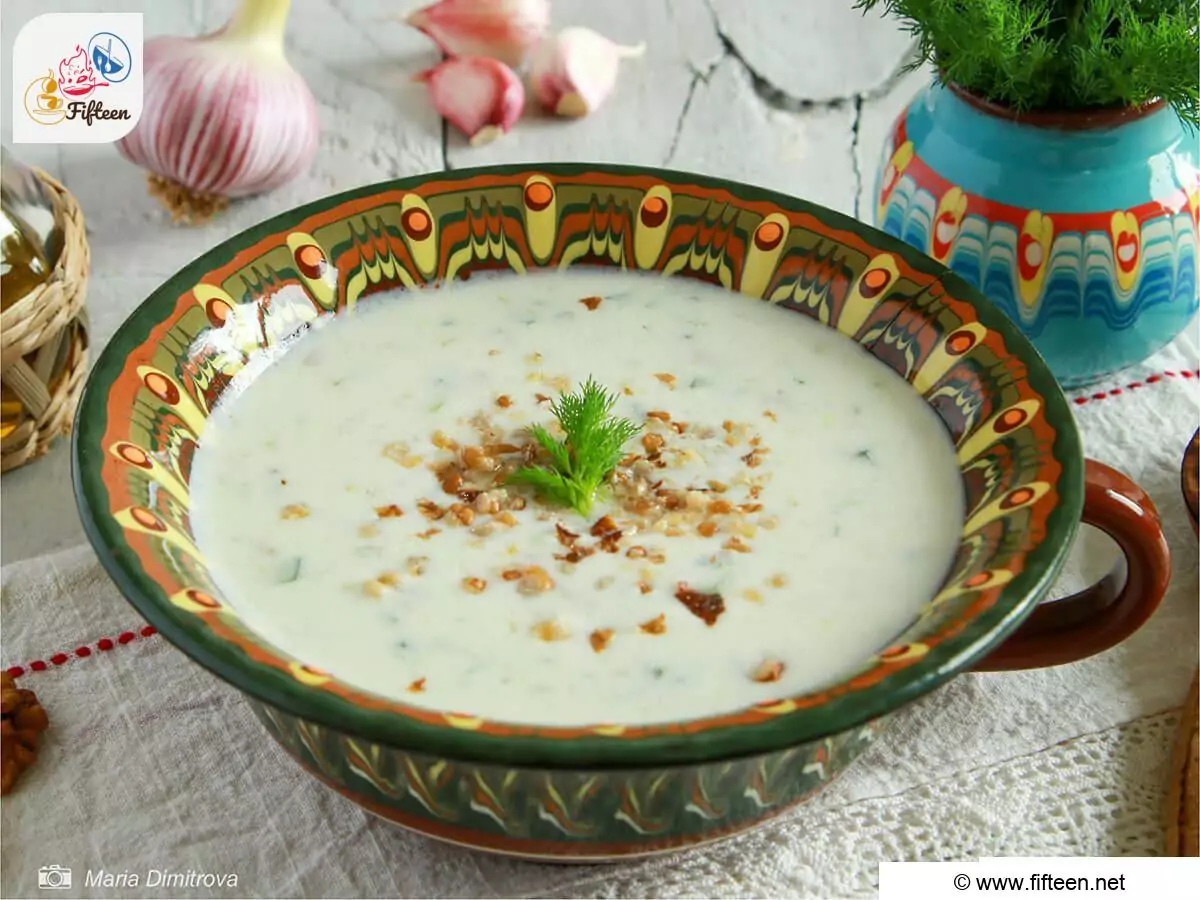
Tarator (Таратор) Recipe (Bulgarian Chilled Cucumber Soup)
Equipment
- Bowl
- Cutting Board
- Knife
- Garlic Press
- Fork
Ingredients
- 1 large-sized or 2 medium-sized cucumbers
- 3 cups of yogurt or sour milk
- 1 or 2 cups of water
- 2 cloves of garlic
- 4 tablespoons of ground or finely chopped walnuts
- Salt to taste
- 2 tablespoons of olive oil
- 2 tablespoons of chopped fresh dill
Instructions
- Dice the cucumber finely, as shown in the images. If you wish, you can peel it beforehand. And place in a bowl.
- Chop fresh dill finely and combine with the cucumber.
- Add the crushed garlic and walnuts to the bowl and mix well with a fork.
- Pour the yogurt over the stirred mixture and add the desired amount of water.
- Season the mixture with salt according to your taste then drizzle the olive oil over the mixture and mix well.
- Place the tarator in the refrigerator to chill for at least 30 minutes before serving. When ready to serve, divide the chilled tarator into bowls or soup plates.
Video
Notes
- The cooking time is based on 5 servings.
- I’ve found that diced cucumbers fare better than grated ones in this recipe.
- Full-fat yogurt enriches tarator beautifully. However, if you’re health-conscious, reduced-fat yogurt is a suitable substitute.
- Bulgarian yogurt is a traditional choice. If you can’t find it, Greek yogurt is the next best option.
- To mimic the sourness of Bulgarian yogurt, consider adding a dash of vinegar.
- Always serve your tarator chilled for an optimal taste experience. Add a few ice cubes for an extra chill factor.
- Control the thickness of your tarator by adjusting the water quantity. Both mineral and chilled filtered water work well in this recipe.
- Though cucumber is a mainstay, feel free to add other finely chopped veggies like radishes, romaine lettuce, carrots, celery, pumpkin, or zucchini.
- While sunflower or olive oil and walnuts are traditional ingredients, they can be omitted based on your preference. The same goes for the usual seasonings, garlic, and dill.


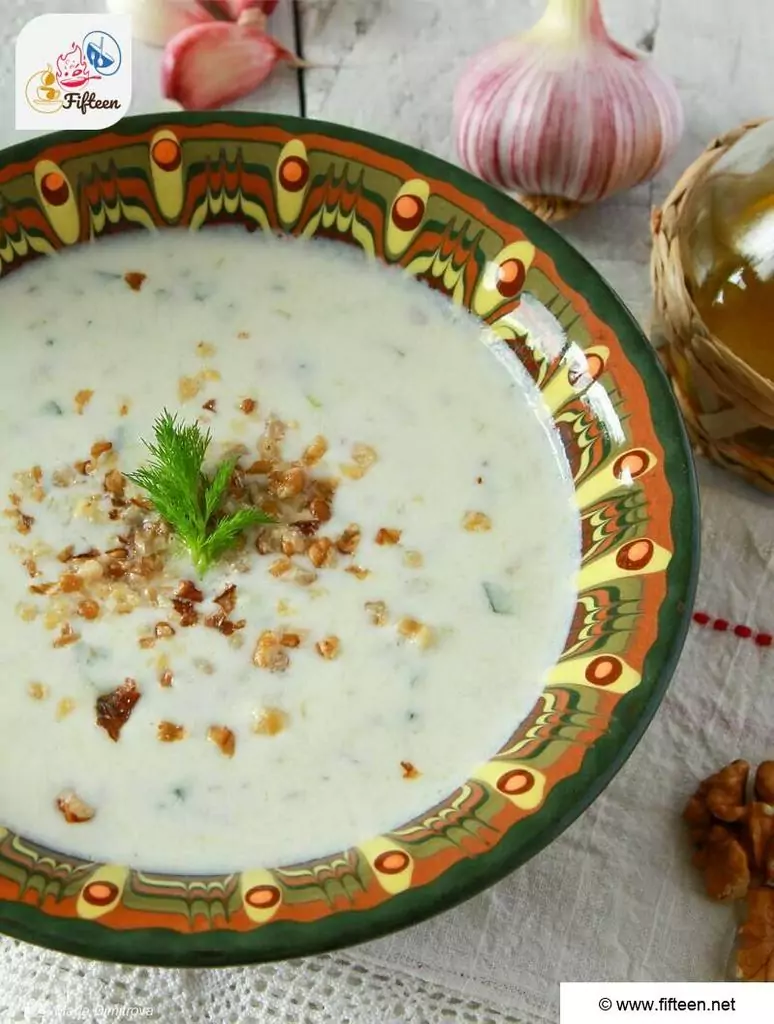
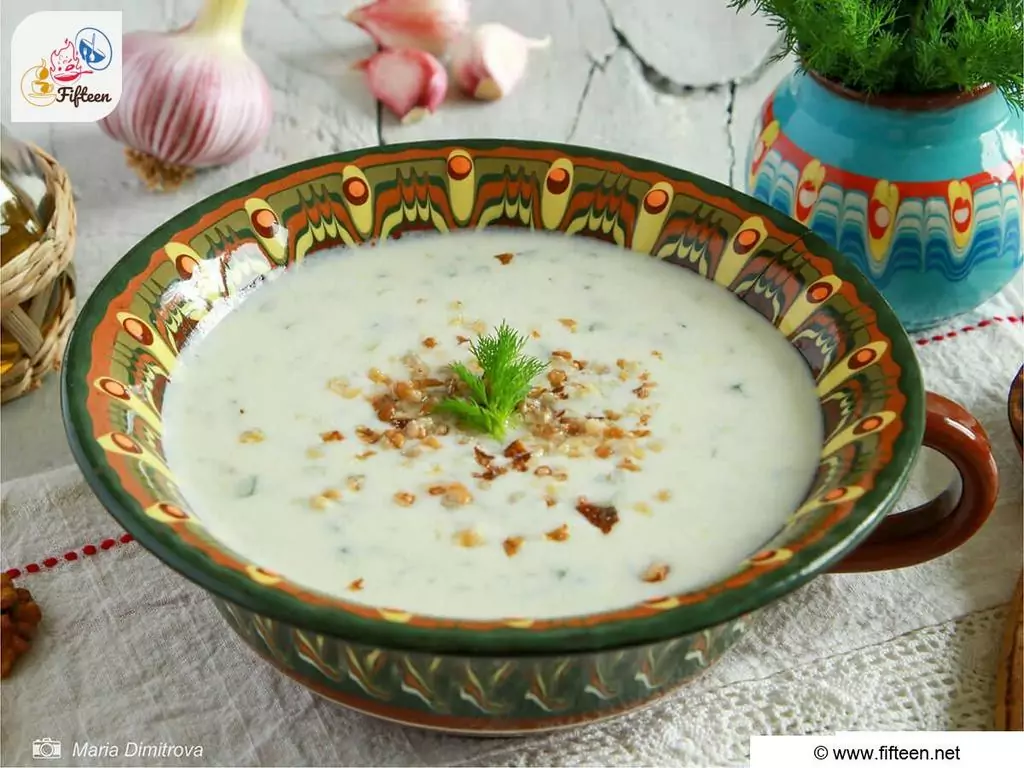
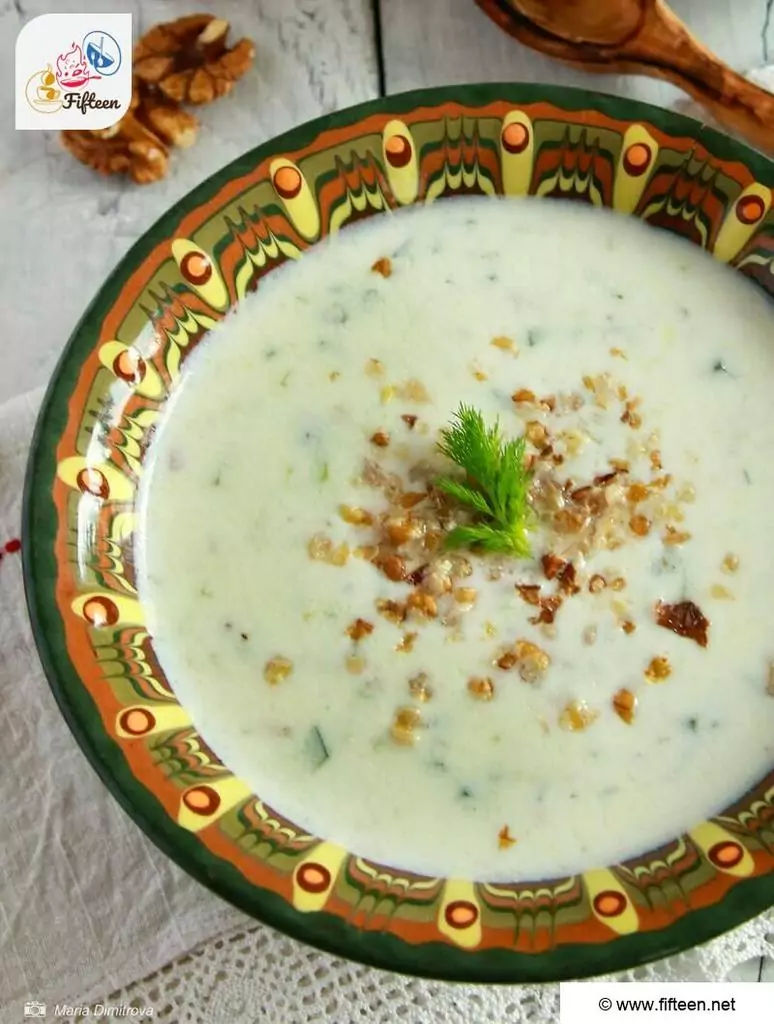
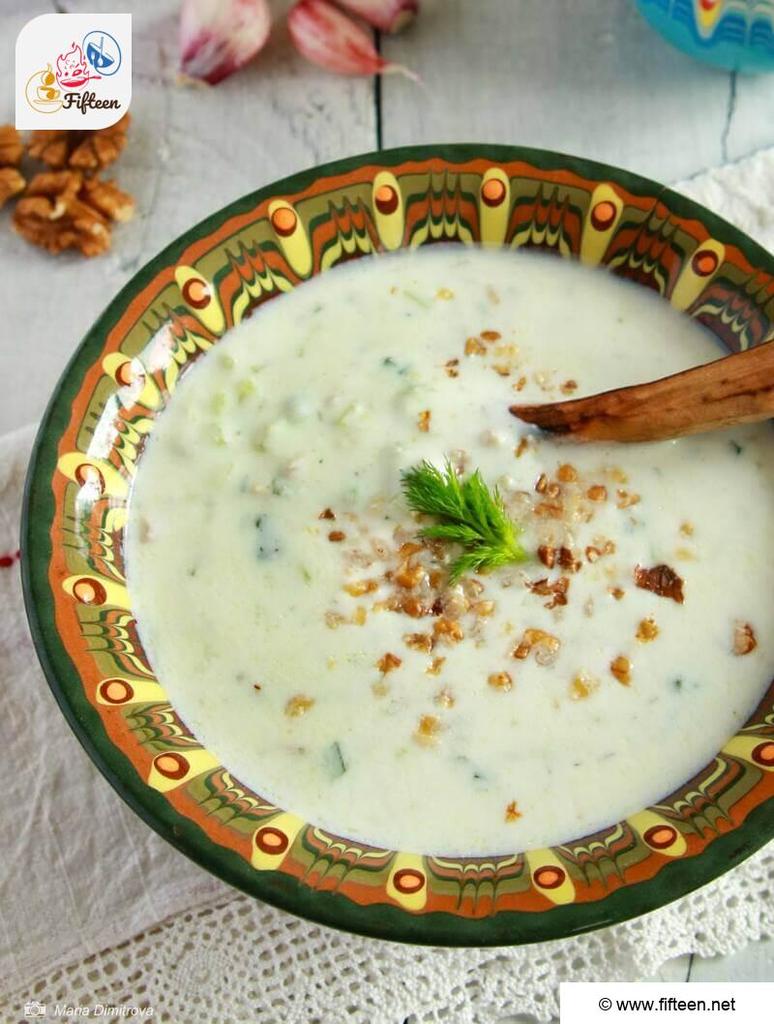
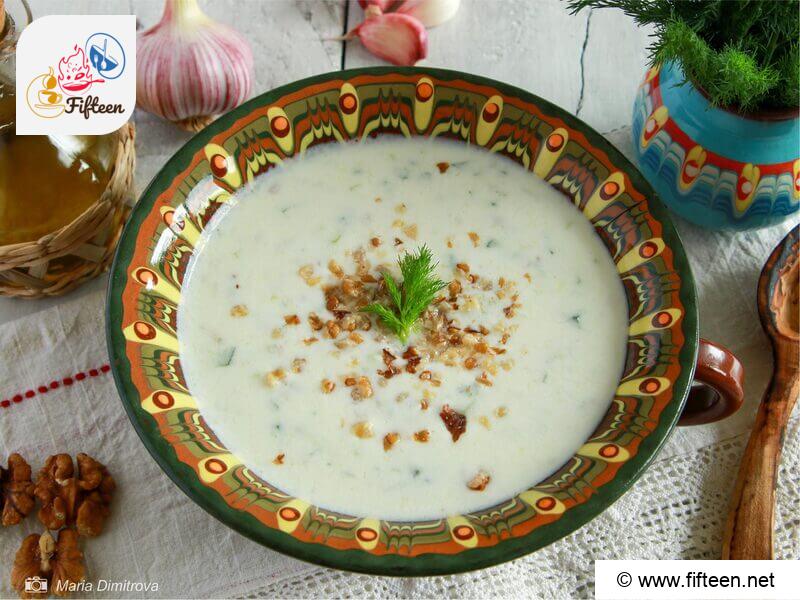
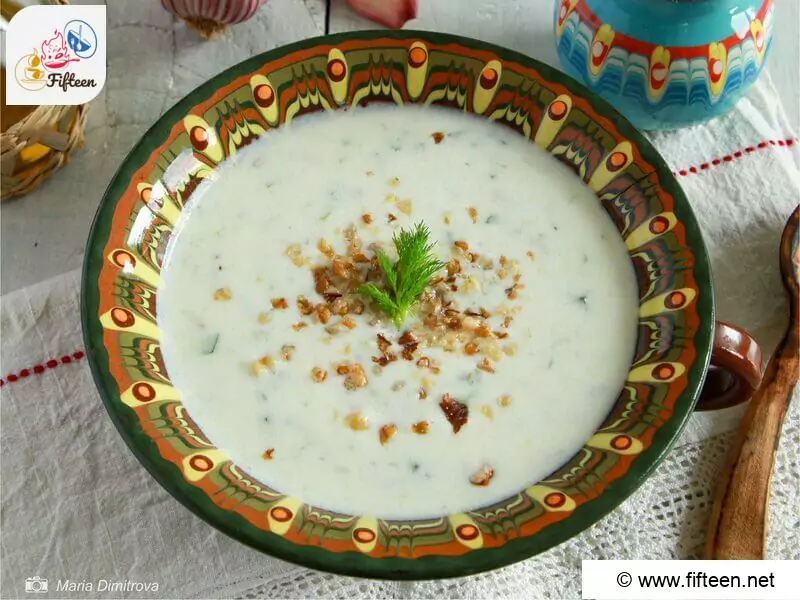
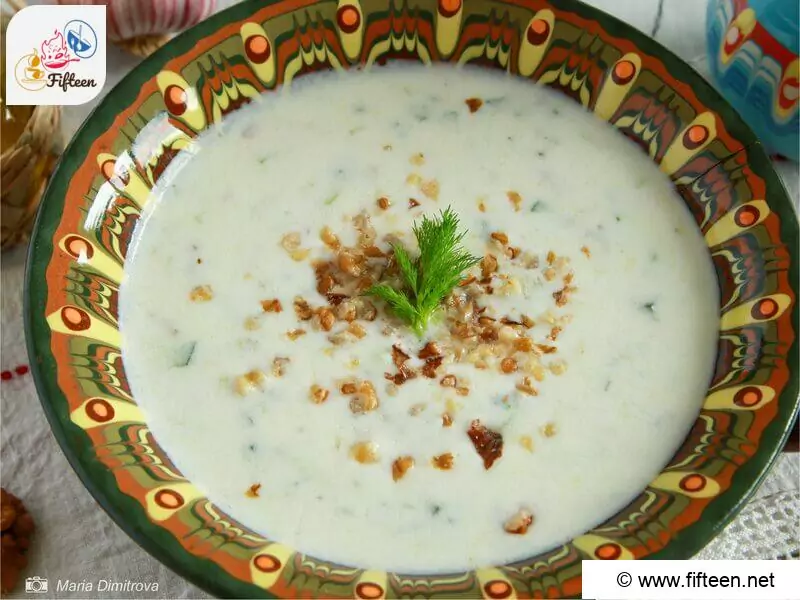
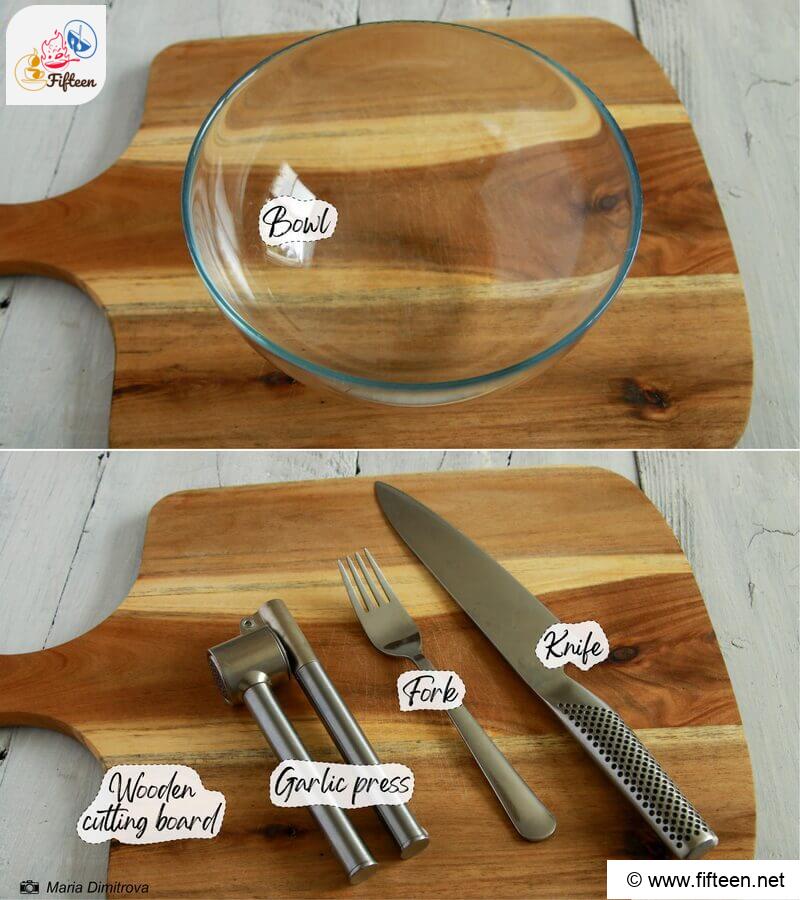
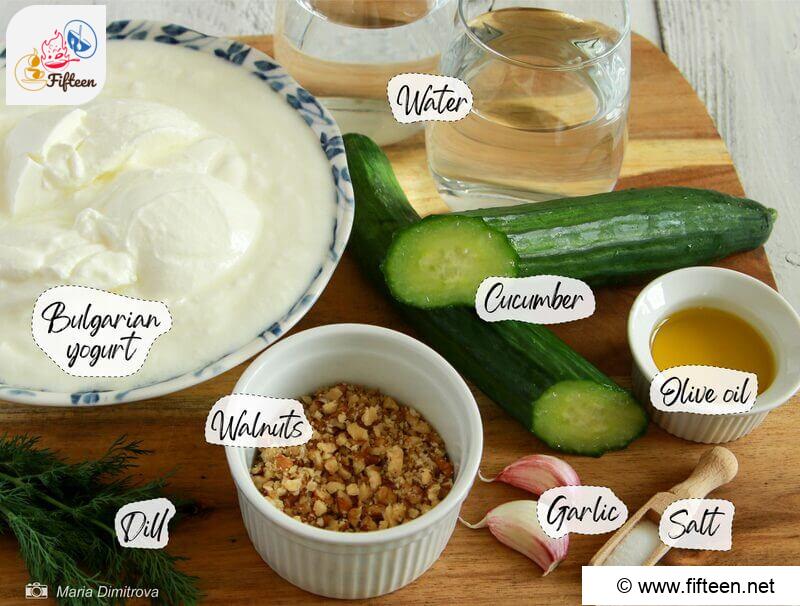
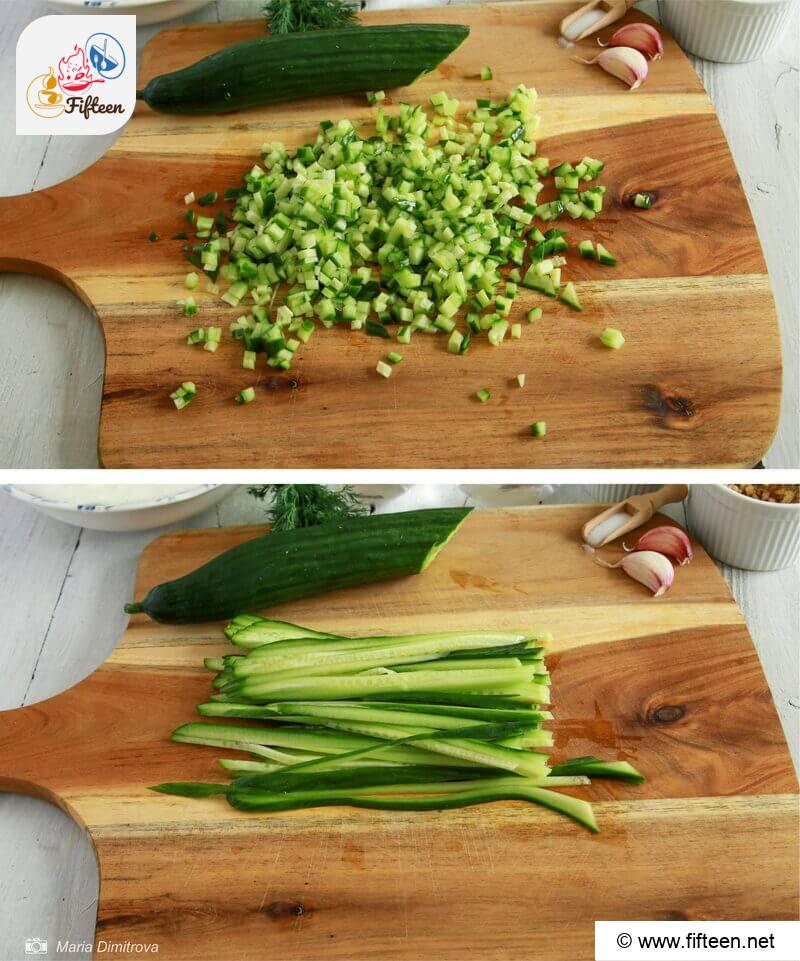
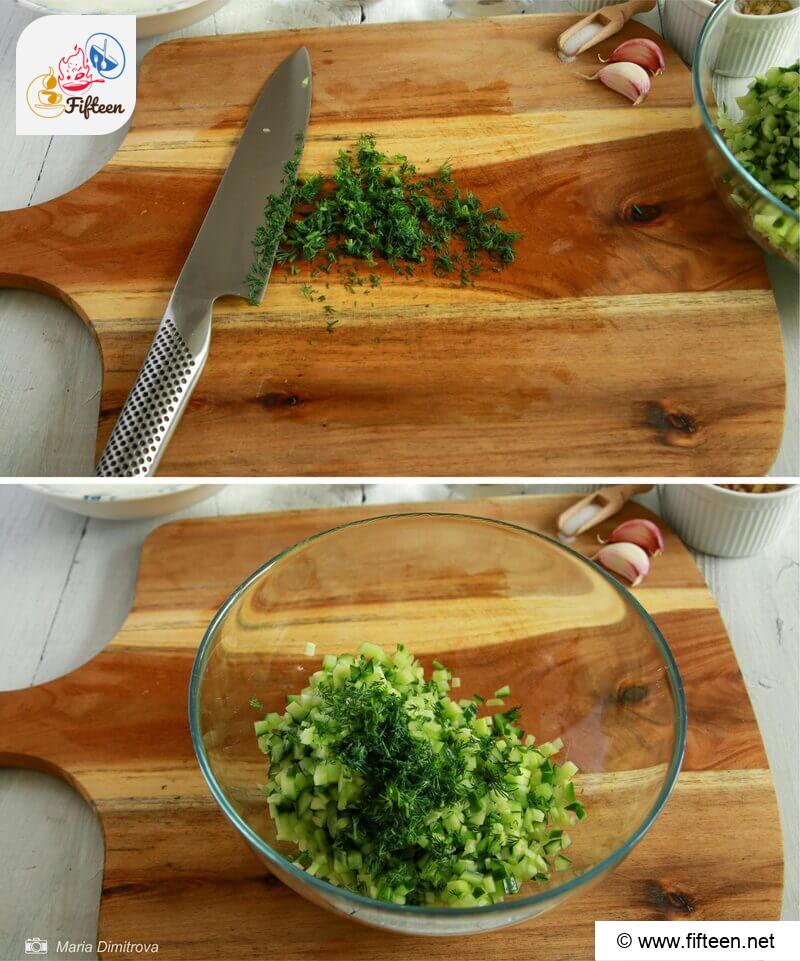
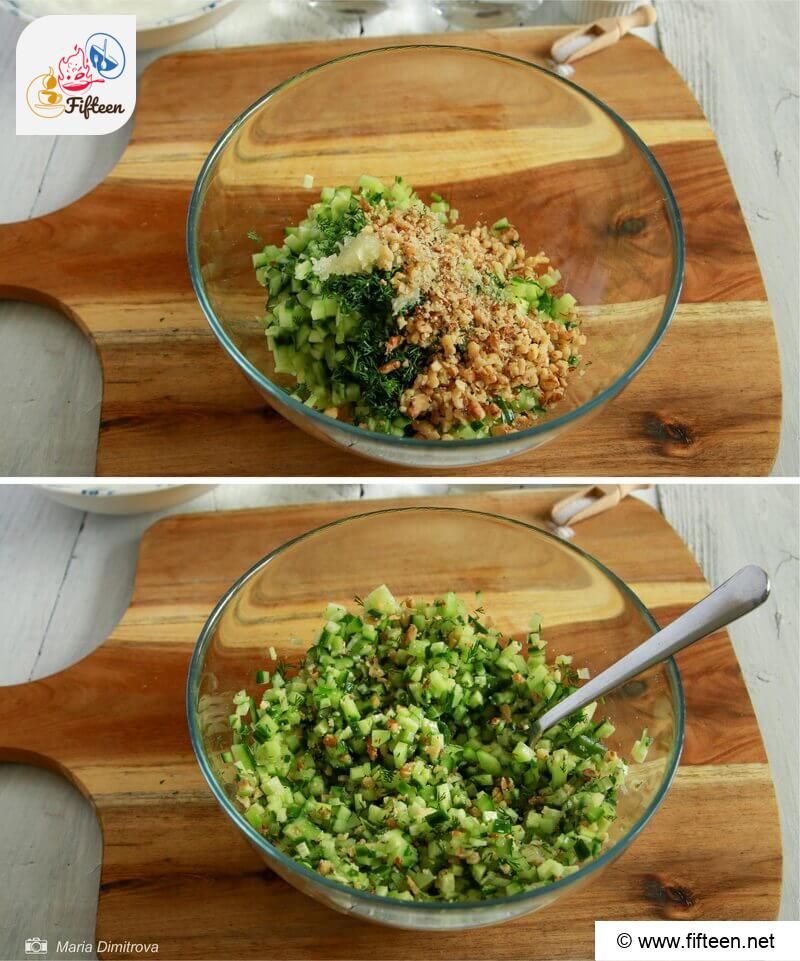
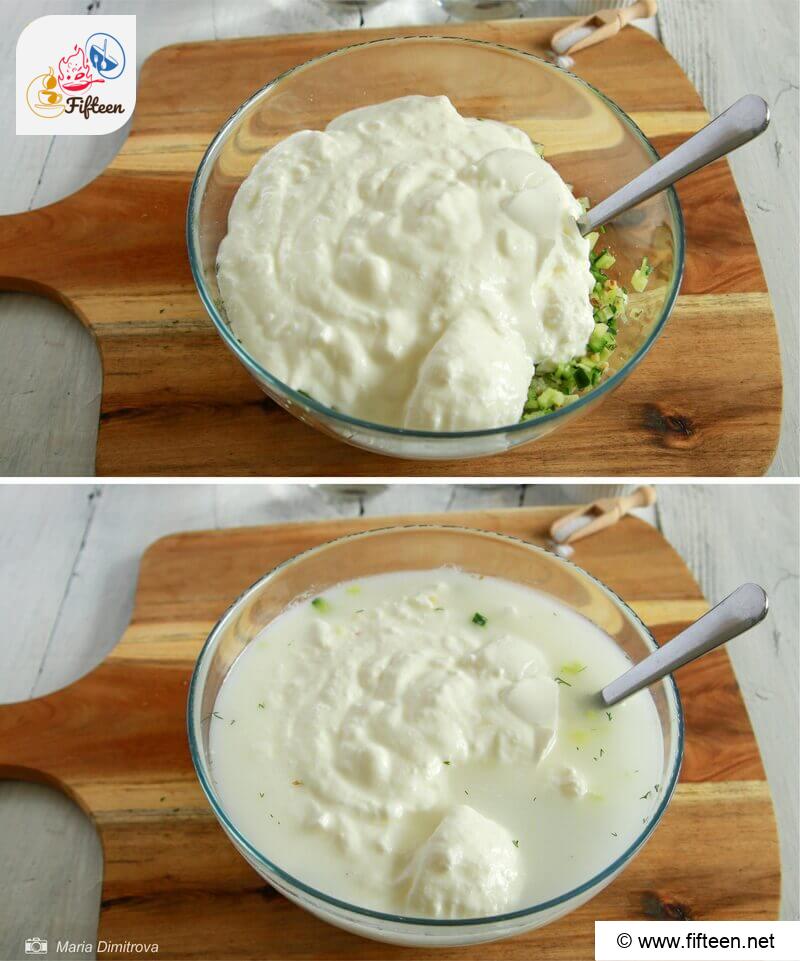
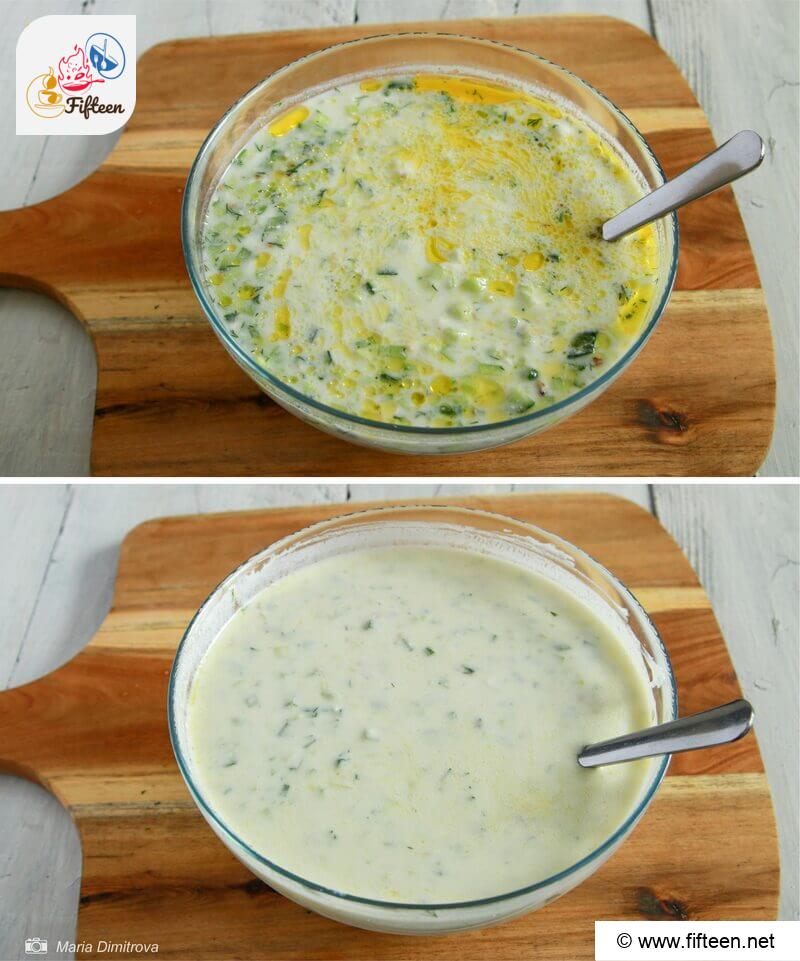
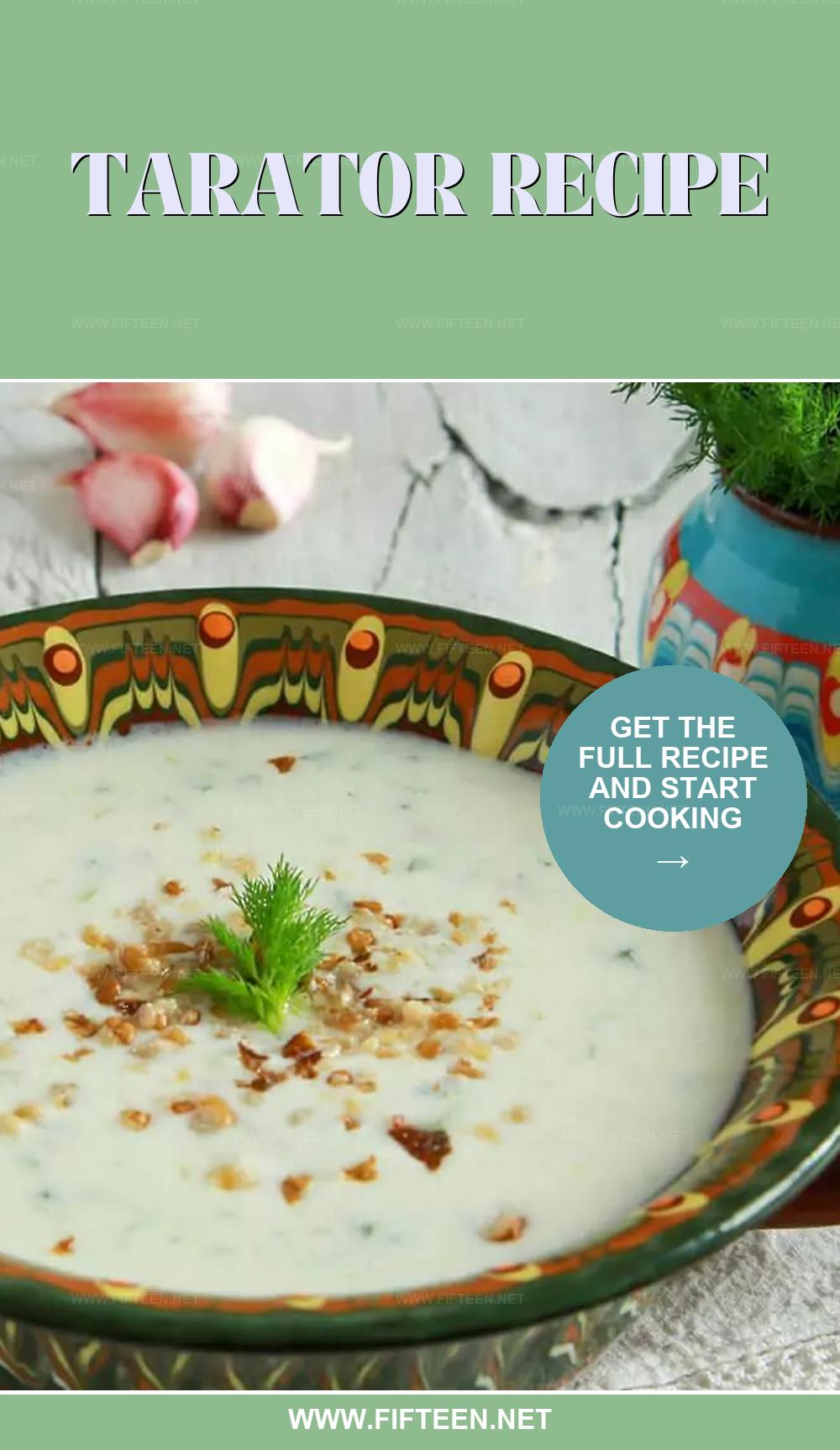
Mia Dimitrova
Content Writer
Expertise
Home Cooking, Meal Planning, Food Styling, Food Photography, Culinary Storytelling, Cooking-video Maker, European Food Content Creator, Bulgarian Food Evaluation Expert
Education
Sofia University “St. Kliment Ohridski”
Completed a thesis titled “Bulgaria on a Plate: A Photographic Journey through our Gastronomic Legacy.”
European Culinary Arts Academy
Maria Dimitrova, or Mia, is a Contributing Writer from Sofia, Bulgaria. Her work beautifully intertwines the rich flavors of Bulgarian and European dishes with their visual storytelling, capturing the soul of each cuisine. Through engaging content and stunning photography, Maria explores the intricate relationship between food’s aesthetic appeal and cultural history.
Specializing in home cooking, food styling, and photography, she brings European culinary traditions to life, offering a unique glimpse into Bulgaria’s gastronomic heritage. Maria’s expertise highlights her deep appreciation for culinary art and invites her audience to embark on a flavorful journey through Europe’s diverse food landscape.